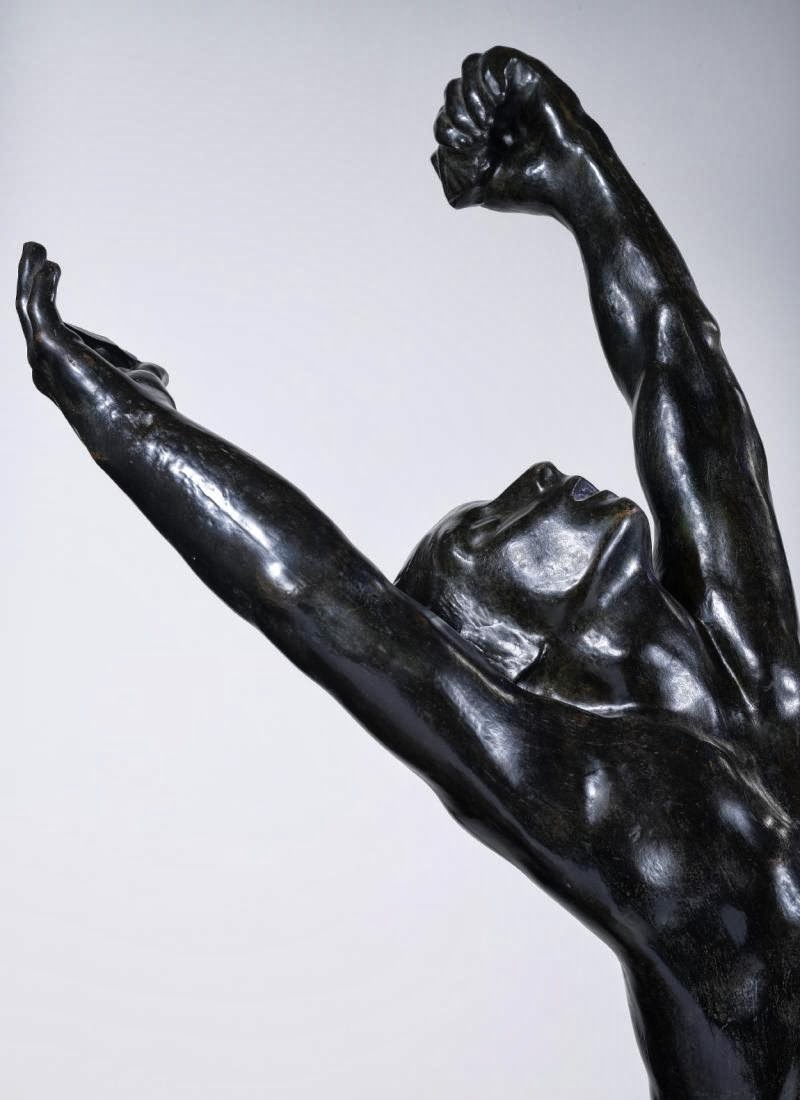As I mentioned before, the
Impressionist theory of art became increasingly more about the technical and
stylistic approaches to painting as a craft.
After Manet established the realization of painting on a flat canvas,
artists moved to focusing on technique and the method of creating artwork, not
necessarily the art itself. Subject
matters were subservient to the medium and style in which they were
presented. Artists grew very specific
with their approach to painting.
Particularly among the more specified art styles during the
Impressionist period was Pointillism, a technique devised by Georges
Seurat. Seurat studied color theory and
the physical qualities of light. Since
light exists in particles, he sought to depict light in small dots of color
(this is why it's called Pointillism).
He would literally dab tiny points of oil paint onto the canvas, one at
a time, and by this method, very, very gradually—painfully gradually—he would
produce a complete work. Most impressive
of his Pointillist artworks is his painting of a Sunday Afternoon at La Grande
Jatte, which measures nearly 7' x 10'.
It shows what would seem to be a
normal Impressionistic subject of a common scene with ordinary people. All are reclining casually on the beach of a
small island in the Seine River near Paris.
The title alludes to the idea that this is a Sunday afternoon, a weekend
day when people are relaxing and lounging around town. There should be nothing formal about it. And we've seen works by Renoir and Morisot,
who painted their subjects with quick, messy brushstrokes to convey the constant
motion and energy of a scene. Here there
is plenty of motion: boats are traveling along the river; children are playing
on the grass; couples are taking a stroll; one man is playing a trumpet. But Seurat has painted his figures quite
stiffly, with straight lines and uniform placement in accordance with each
other. The majority of figures are
paired or grouped in trois. The ones
standing are standing very tall and straight.
The ones sitting, though more relaxed in their poise, appear just as
strictly geometric. The man's top hat on
the left is perfectly straight. The
woman's whole body on the right stands perfectly erect. Look how straight Seurat has painted
her. This is quite different from
Morisot's style of choppy brushwork.
Seurat has instead painted his figures ideally, geometrically, even
perfectly. He does so because his
painting is not about the subjects; it is about his medium of painting, his
style. Through Pointillism, Georges
Seurat hoped to adopt literally the most perfect approach to painting—by
dabbing a canvas with paint one square centimeter at a time. This painstaking process was about creating
an ideal model of art technique; therefore, the figures appear idealized
because this is a painting which employs that technique. Think of it this way. If the artist is the one showing us the world
through the lens of his artistic style, then the entire world would look
perfect through the lens of the artist with a perfect style. The figures in Sunday Afternoon at La Grande
Jatte appear so rigid and symmetrical because the style was rigid, and Seurat
creates an idealized image of them all because his Pointillist approach to art
was intended to become the ideal style of art.
So you see that the subject matter has been molded to fit the medium and
stylistic approach of the art in which it appears. But here the artist has not conveyed a
practical meaning which relates back to the subject matter (as the stylistic
approach to light on subject matter in Monet's paintings related back to the
light on the actual subject matter); instead he has created an image based purely
off of conceptual art theory. This
painting is an ideology of art; and though art does reflect back on the real
world, this painting ultimately is about conveying its own technical
significance and has in fact very little to do with the subject matter of the
island beach, the people, or anything else depicted here, for that matter.













